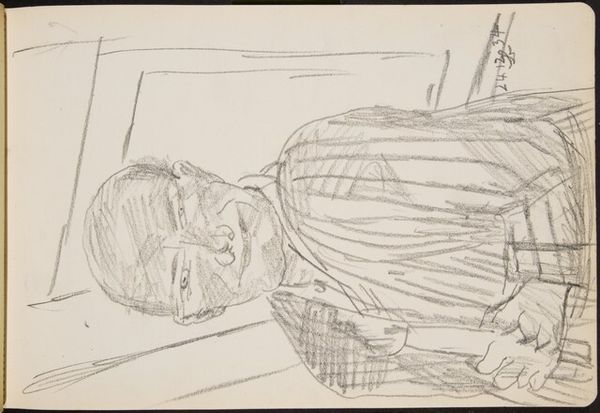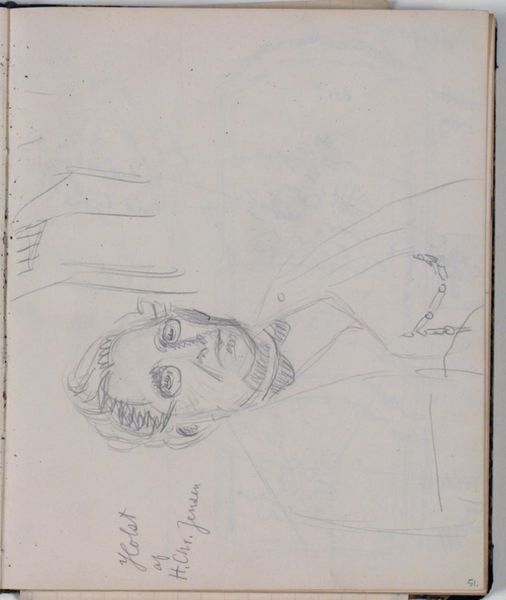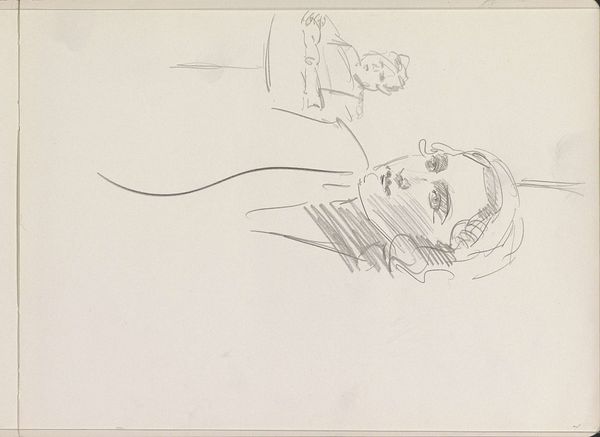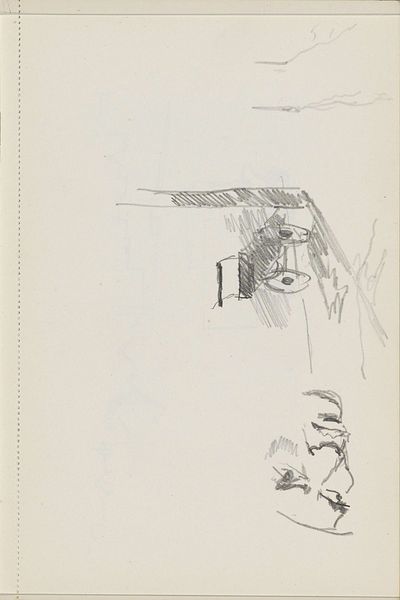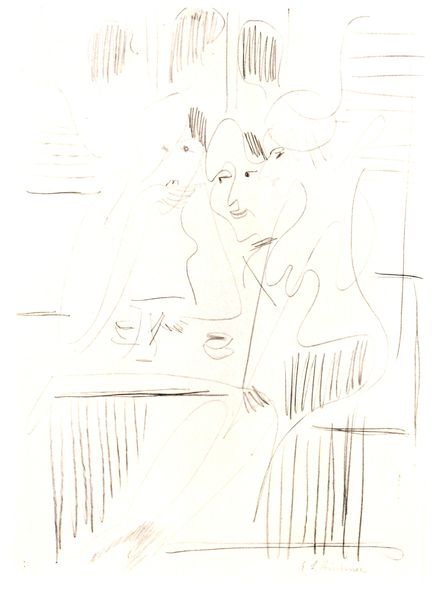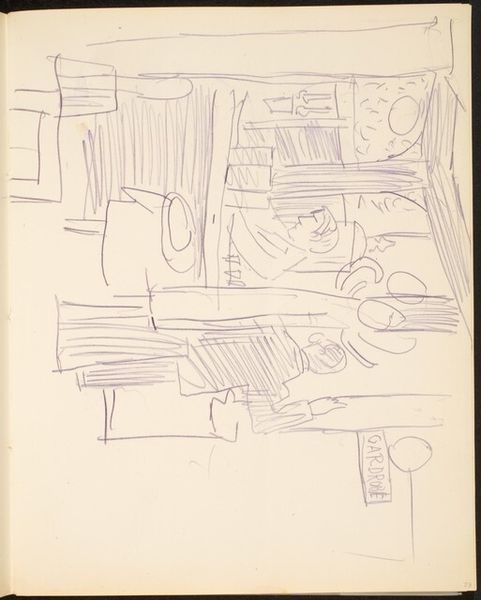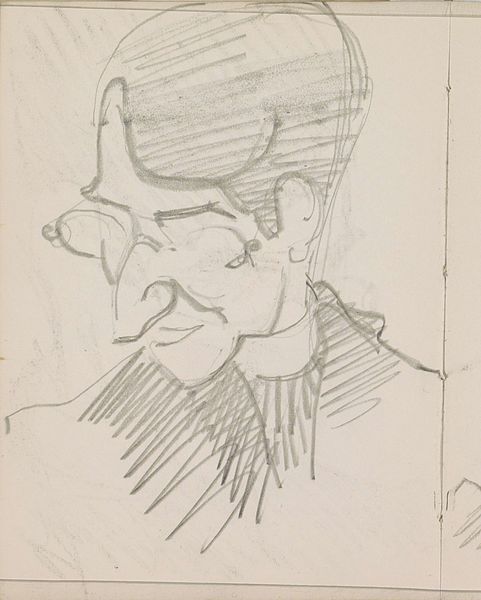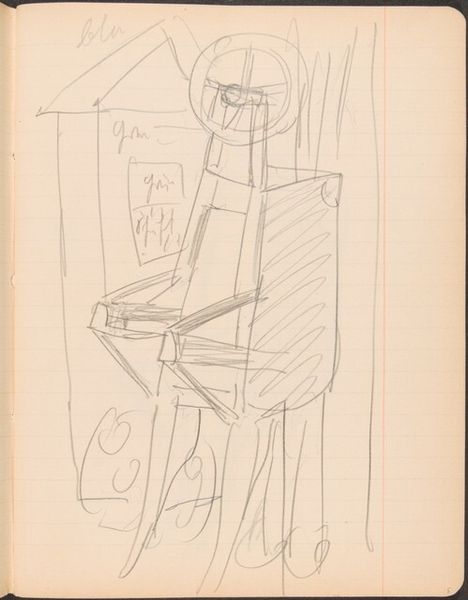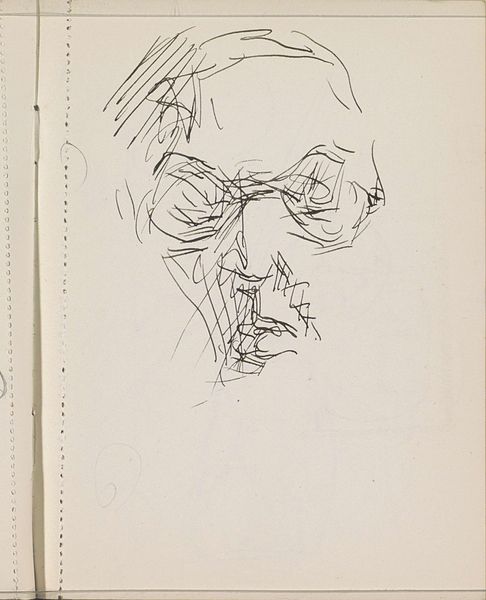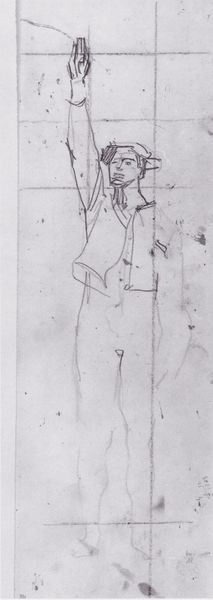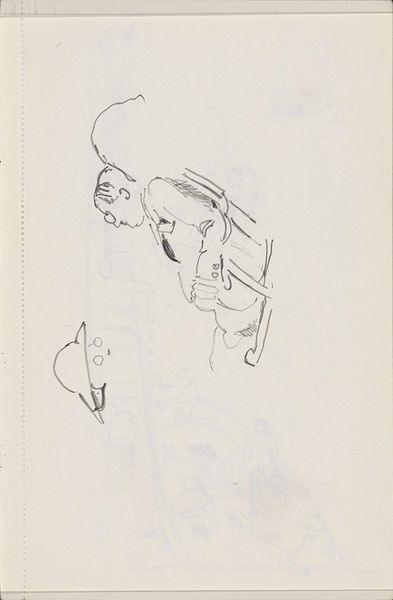![Lesender Mann im Café (Reading Man in a Café) [p. 22] by Max Beckmann](/_next/image?url=https%3A%2F%2Fd2w8kbdekdi1gv.cloudfront.net%2FeyJidWNrZXQiOiAiYXJ0ZXJhLWltYWdlcy1idWNrZXQiLCAia2V5IjogImFydHdvcmtzL2ViNzcxYmMxLTM3YzMtNDZiZC05YzE0LTE5NjYzOWYxODE0ZS9lYjc3MWJjMS0zN2MzLTQ2YmQtOWMxNC0xOTY2MzlmMTgxNGVfZnVsbC5qcGciLCAiZWRpdHMiOiB7InJlc2l6ZSI6IHsid2lkdGgiOiAxOTIwLCAiaGVpZ2h0IjogMTkyMCwgImZpdCI6ICJpbnNpZGUifX19&w=1080&q=75)
drawing, pencil
#
portrait
#
drawing
#
landscape
#
german-expressionism
#
figuration
#
pencil
#
expressionism
Dimensions: page size: 20.5 x 16.3 cm (8 1/16 x 6 7/16 in.)
Copyright: National Gallery of Art: CC0 1.0
Curator: Looking at this preliminary sketch titled "Reading Man in a Café," attributed to Max Beckmann, what springs to mind for you? It seems to be done primarily in pencil. Editor: There’s a sense of isolation despite being in a public space. It evokes the feeling of detachment that sometimes accompanies being lost in thought or a book, amidst the everyday bustle. I wonder, what’s compelling you about this piece beyond the medium and its likely swift execution? Curator: As a drawing, it's really compelling. It's not trying to be polished or finalized; instead, it reveals the immediate hand of the artist, the decisions being made in real-time through the pressure applied to the pencil, the hurried quality, the lack of detail and refinement, offering something immediate. What do you think about the setting? Editor: The café context is particularly resonant given its history as a site of social and political discourse, particularly for artists and intellectuals during periods of intense social upheaval. The sitter almost looks anxious, perhaps reflective of this milieu. I’d love to delve into how Beckmann’s personal history informed this feeling of displacement within the scene. Curator: His use of readily available materials and everyday scenes reflects an Expressionist interest in the raw and unfiltered representation of reality, moving away from established studio practice, and his direct interaction with his surroundings. It’s art arising directly from life as lived. What narratives do you think Beckmann is exploring in relation to gender, race, or class through this very particular figure in an accessible place? Editor: The subject's intense focus coupled with the hurried line work, might speak to a sense of urgency, perhaps a response to the social anxieties and political tensions prevalent at the time that manifest in a working class and everyday life scene, emphasizing accessibility and realism by moving it to an ordinary, public space. Curator: The sketch really makes you think about how Beckmann transformed a mundane material into an object for thoughtful viewing. I find his emphasis on accessible production especially fascinating. Editor: Absolutely! And, the work opens avenues to considering the wider context of early twentieth-century intellectual life, questioning who had access to those spaces, and what conversations might have been unfolding beyond what Beckmann captures.
Comments
No comments
Be the first to comment and join the conversation on the ultimate creative platform.
